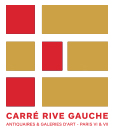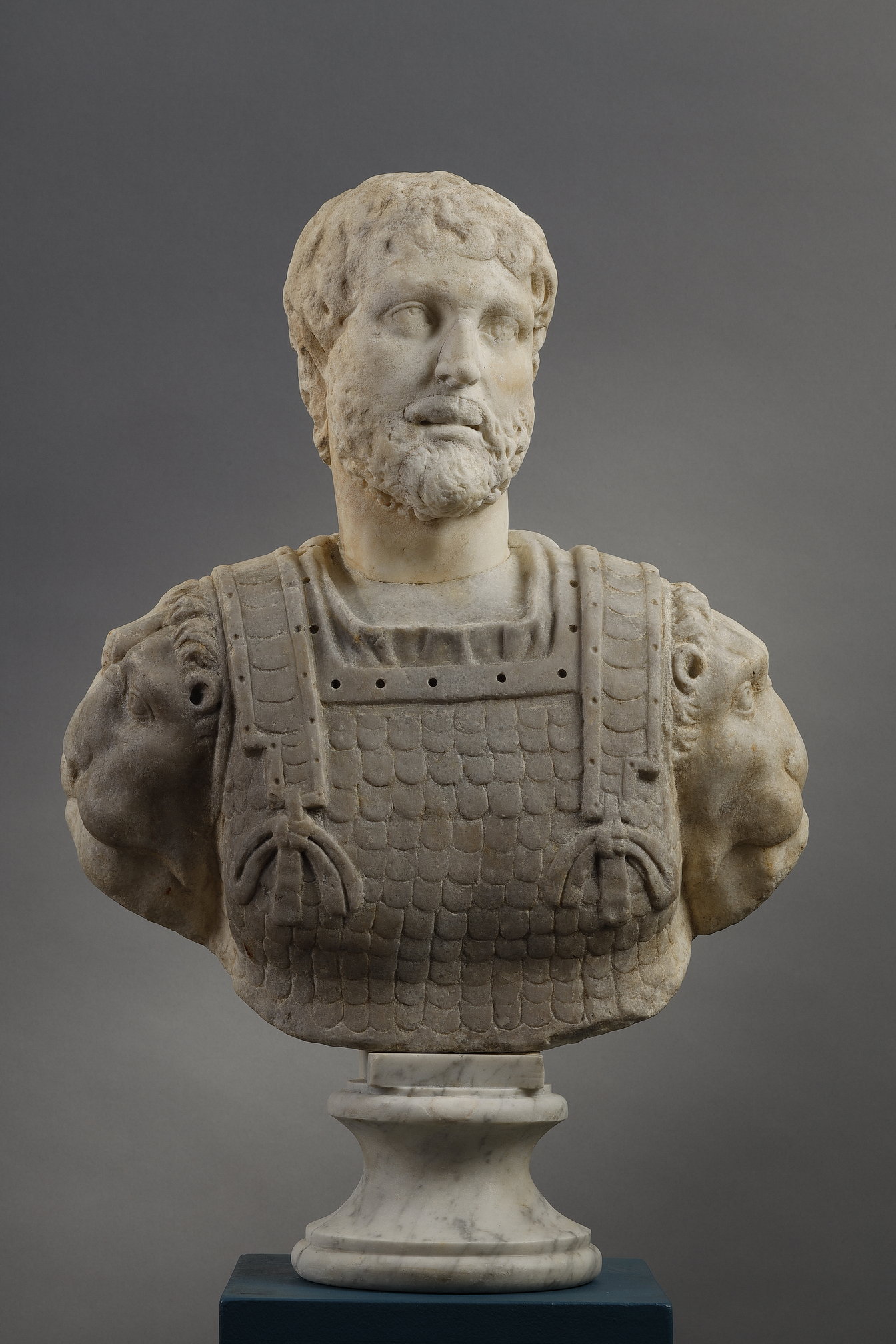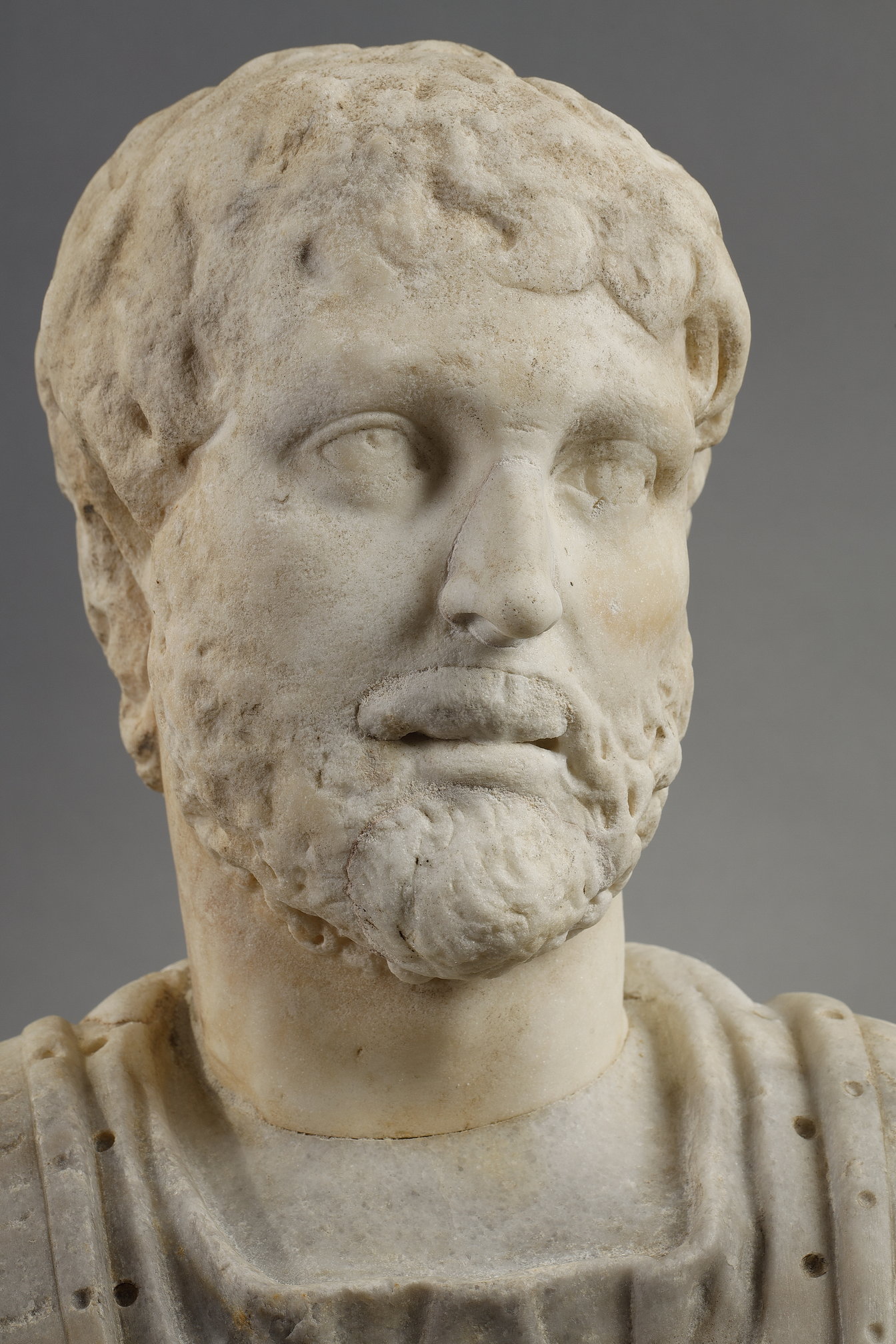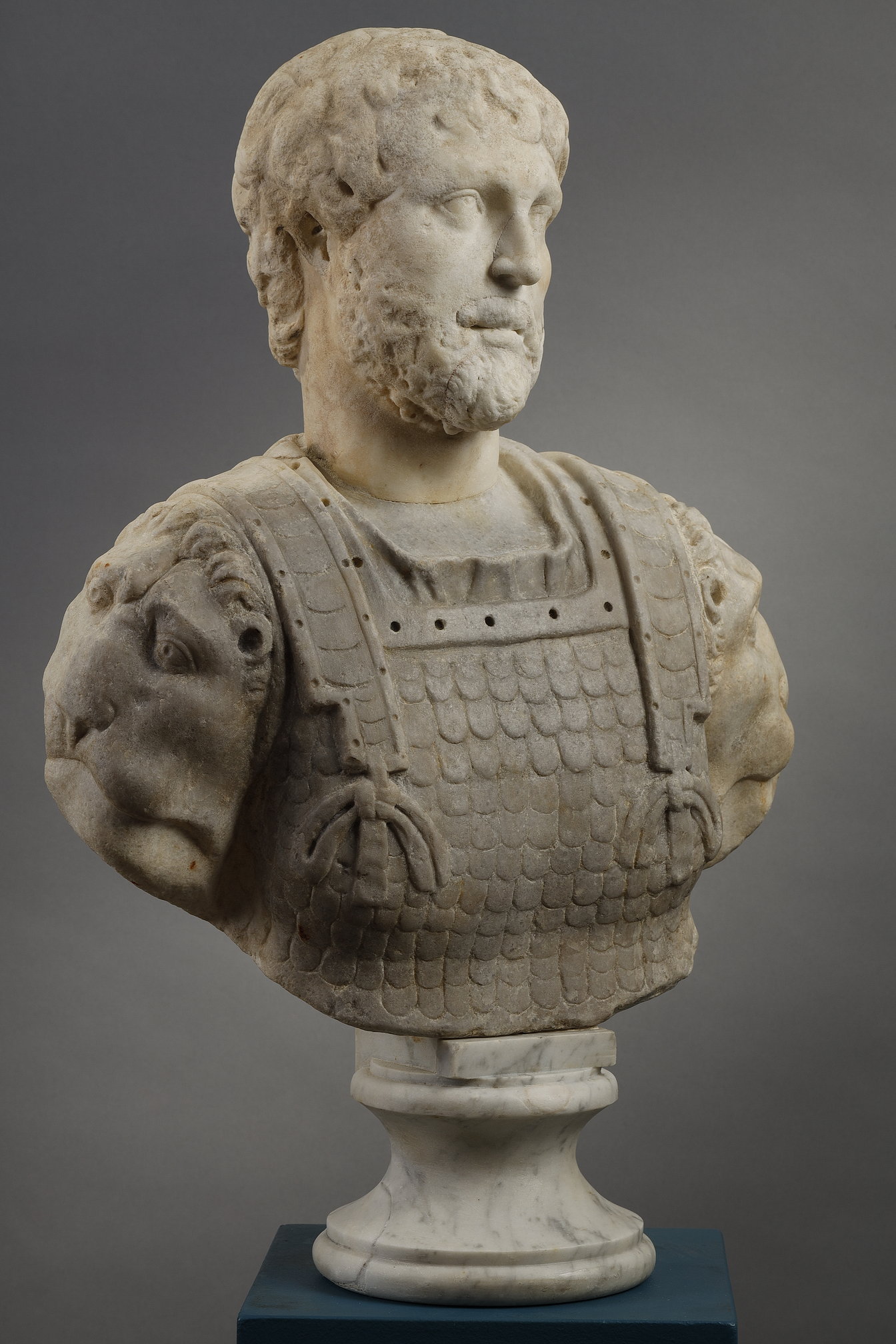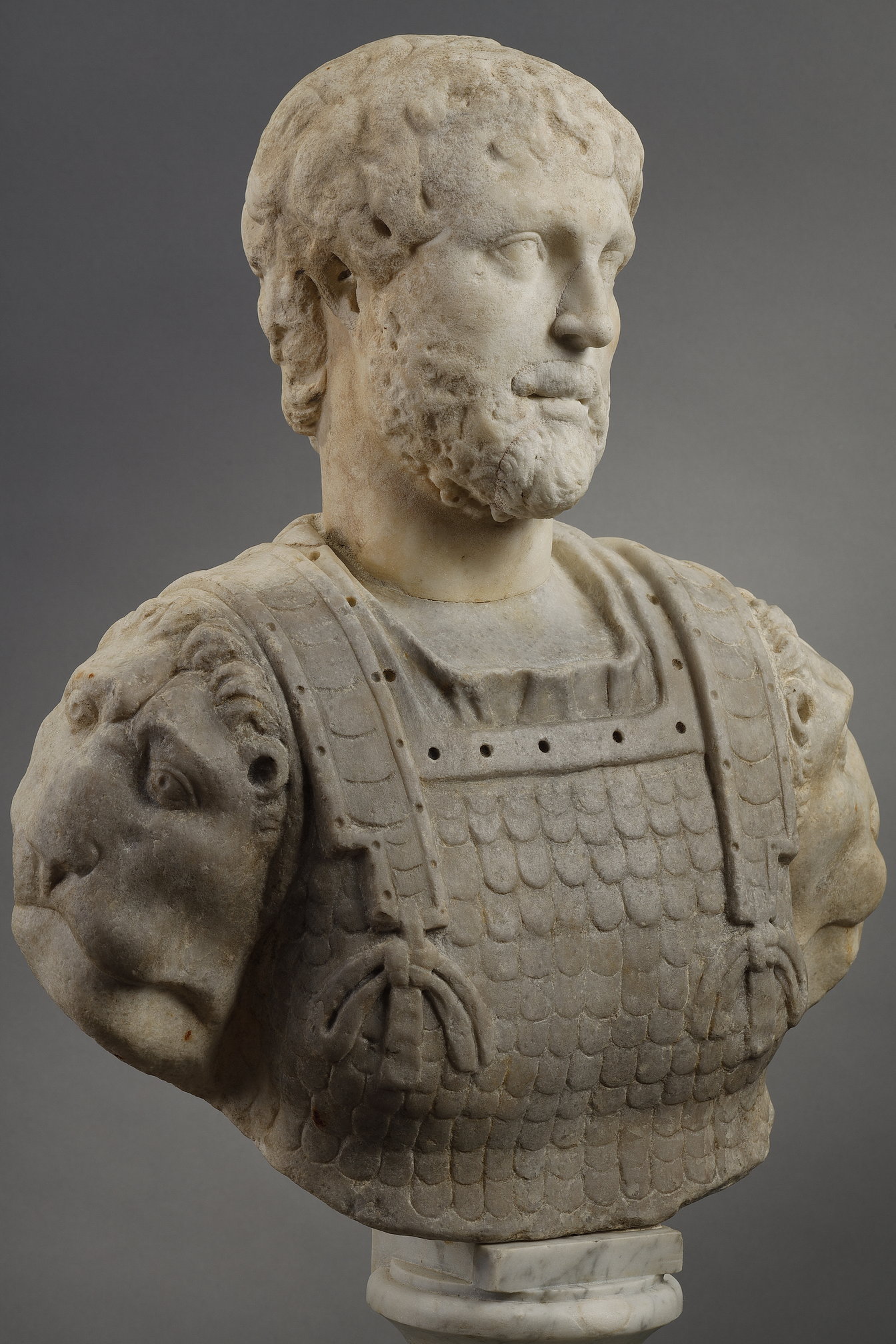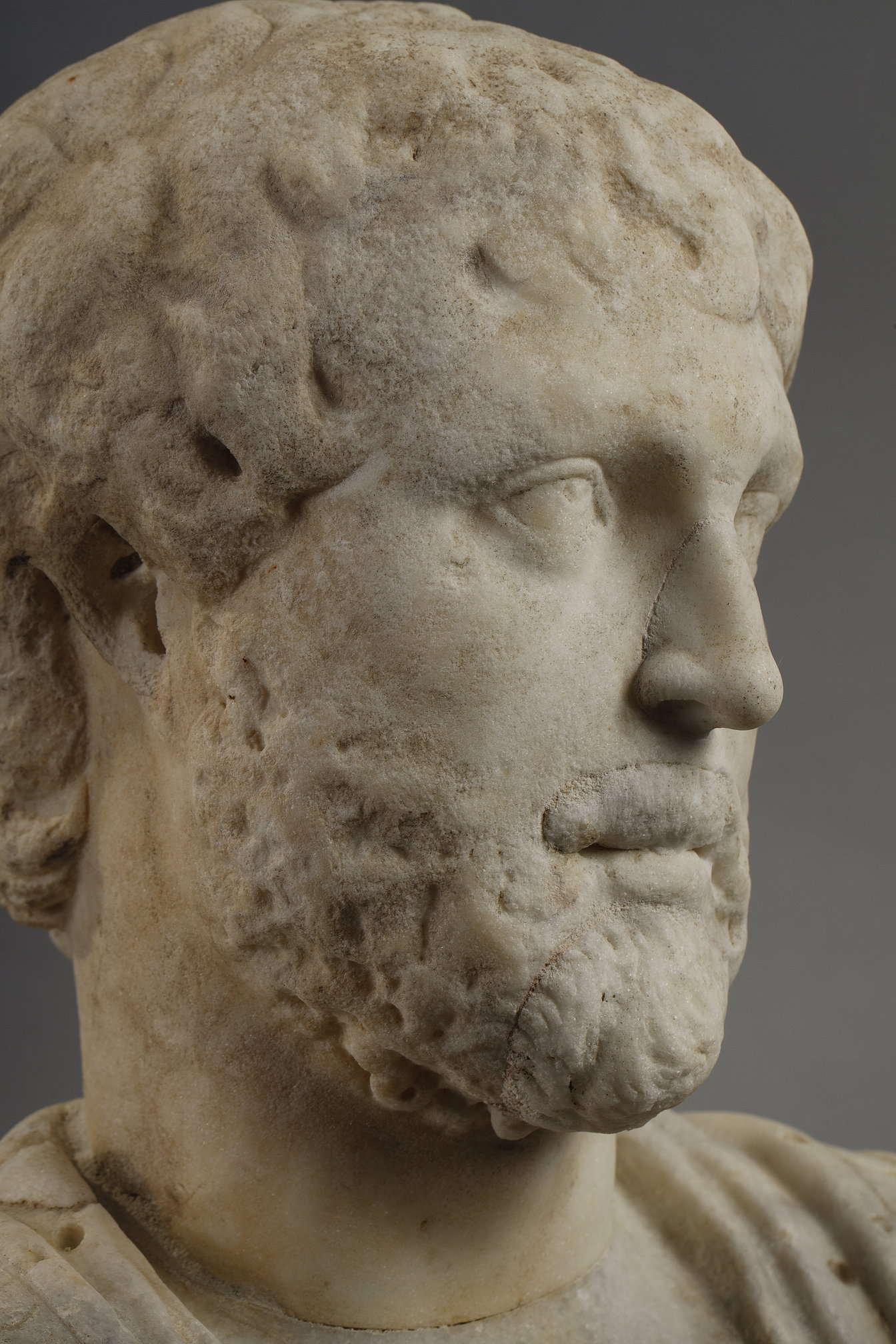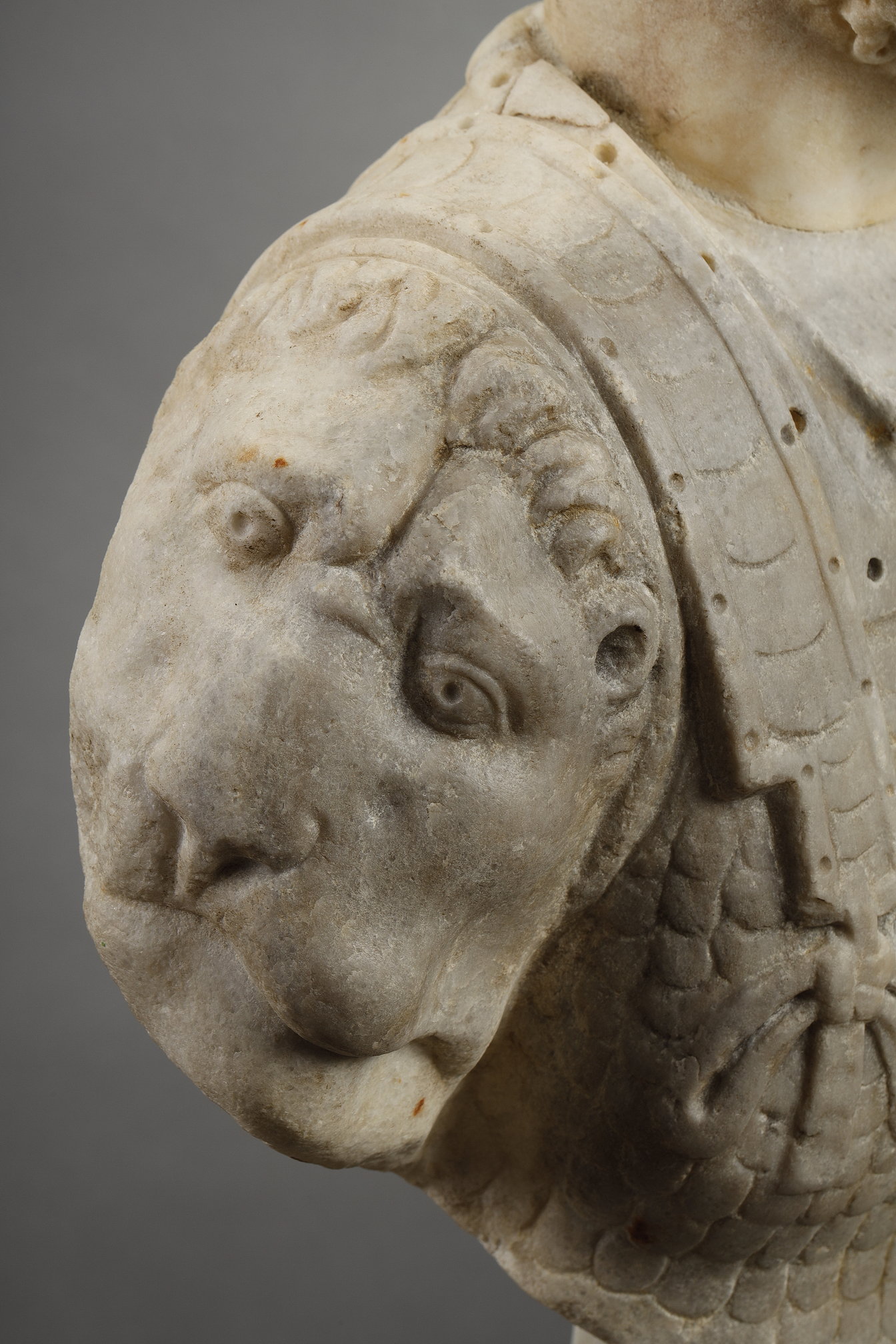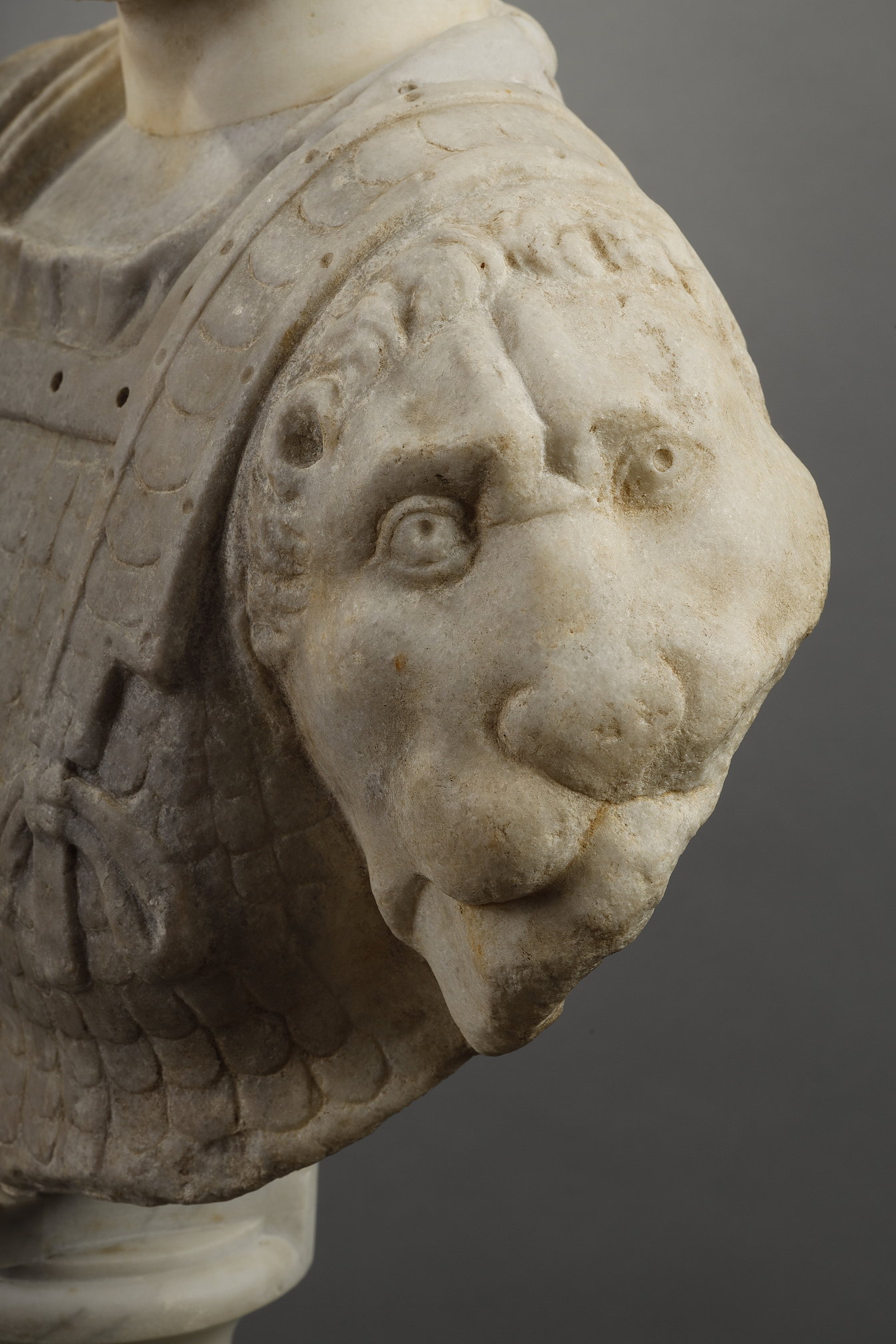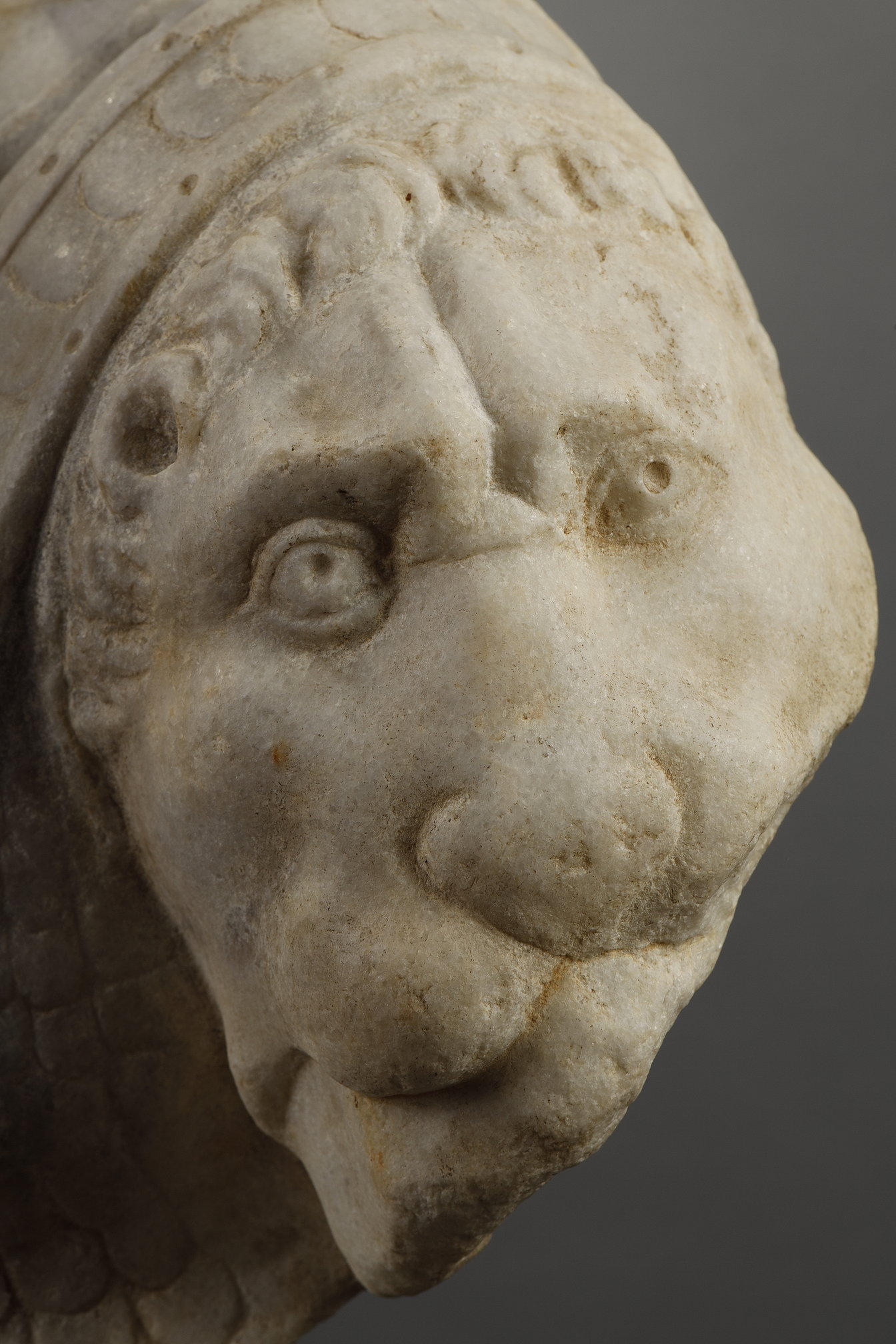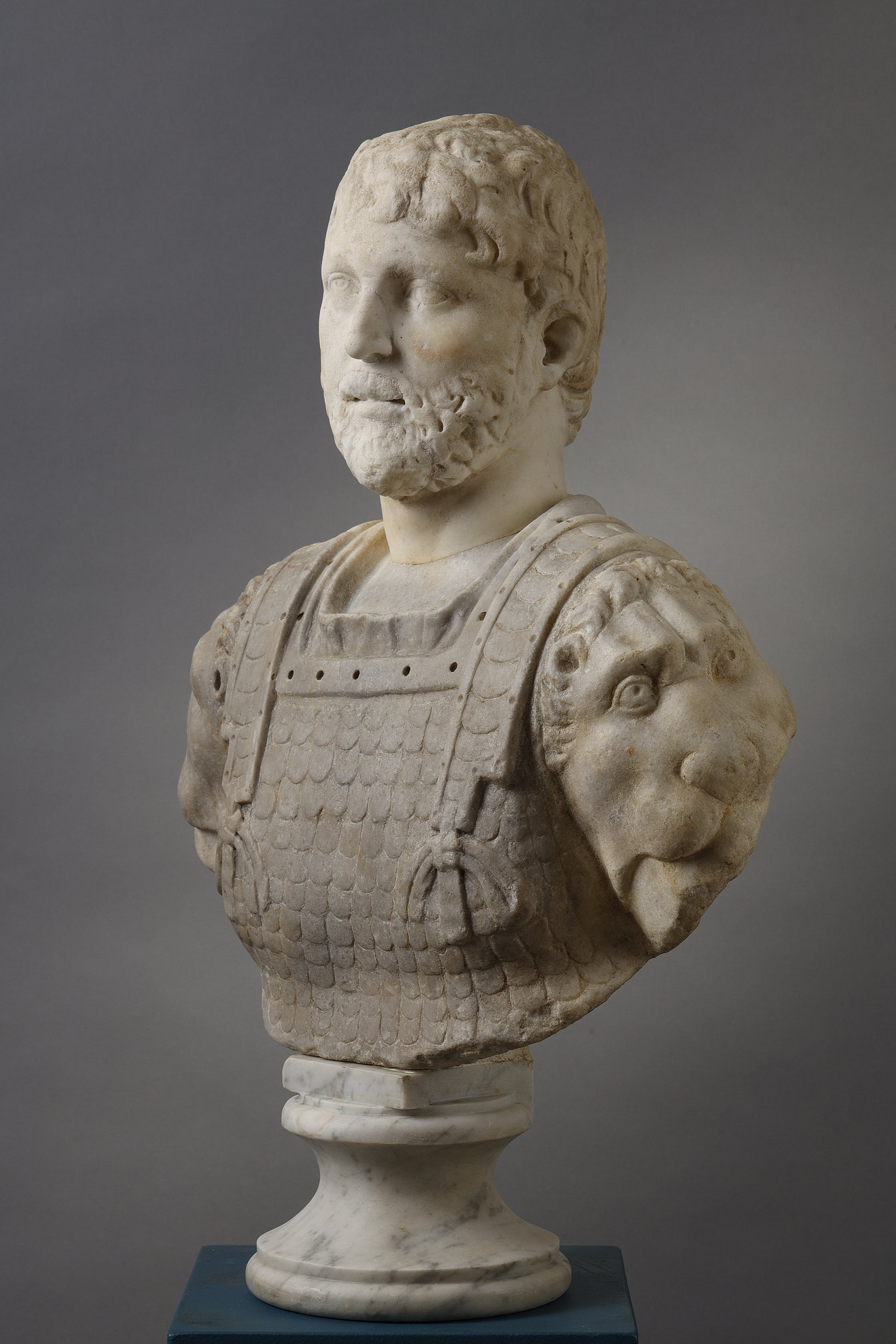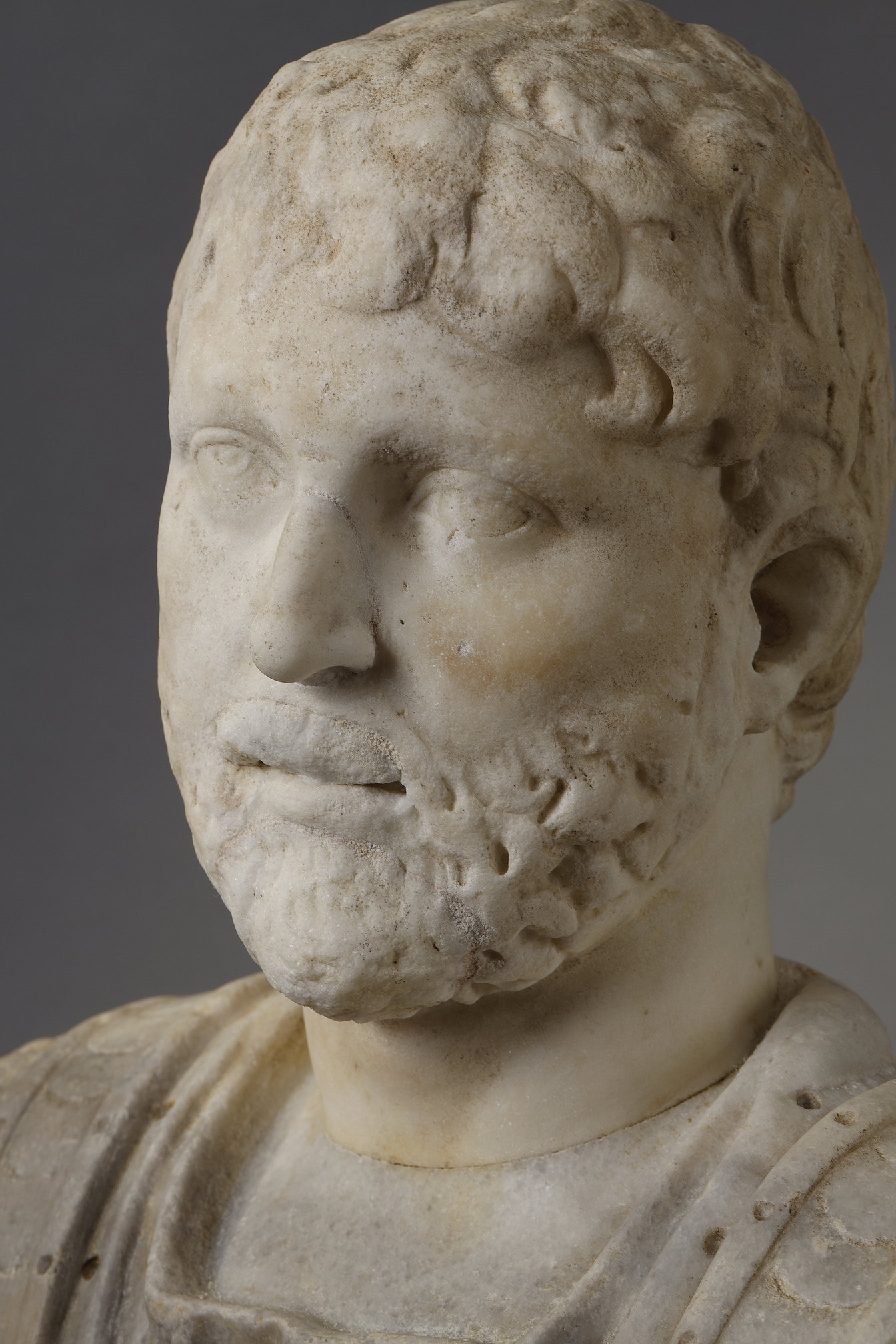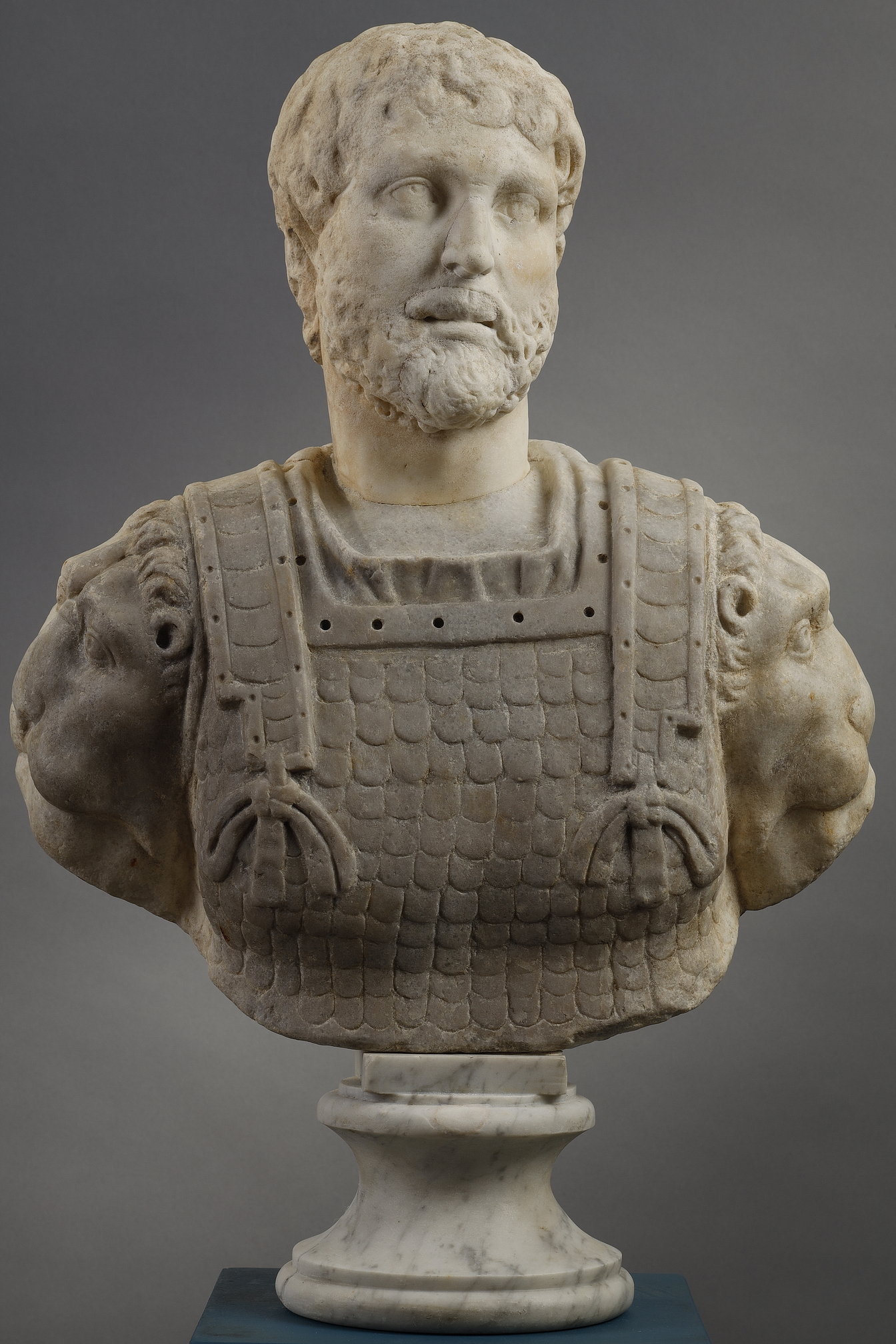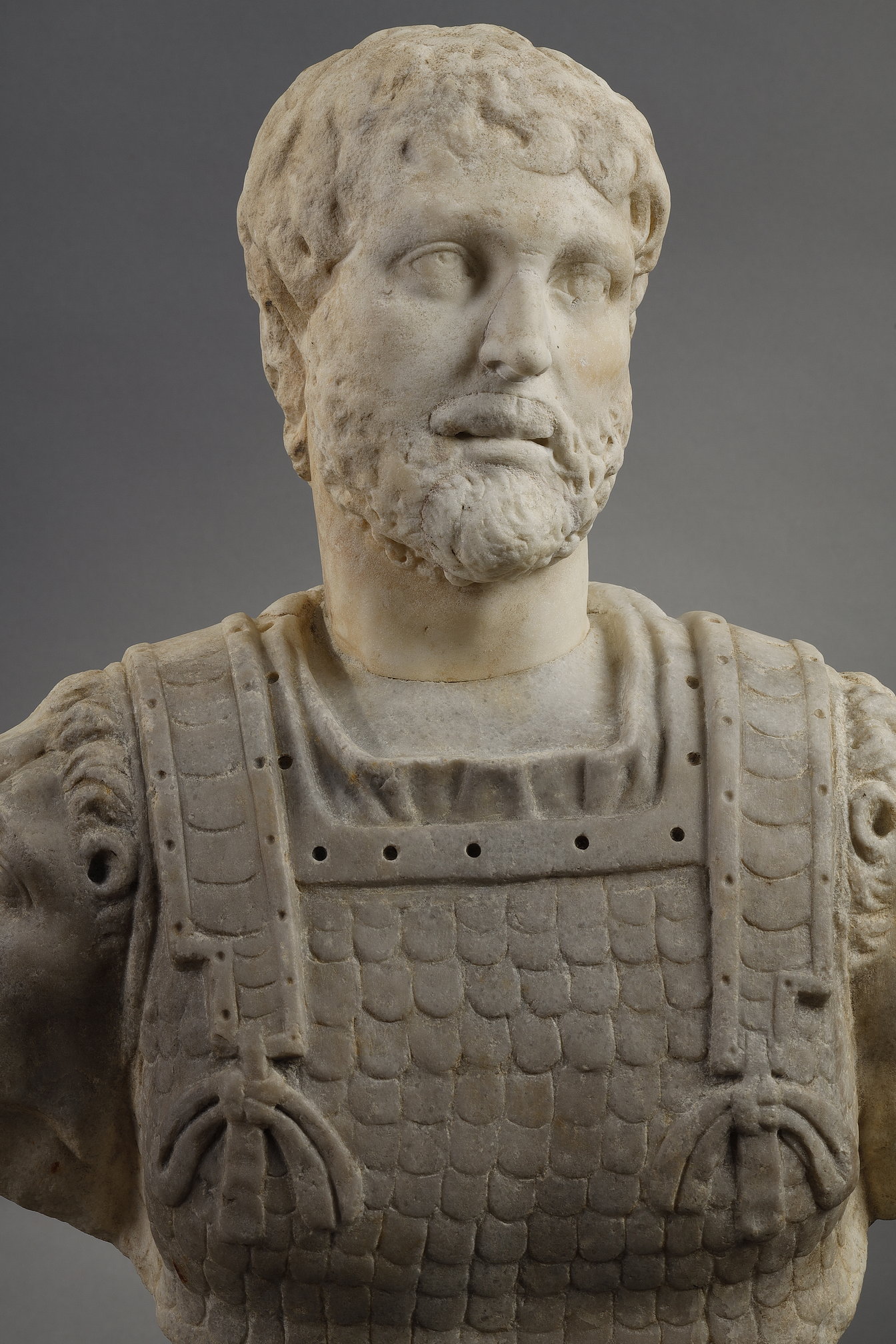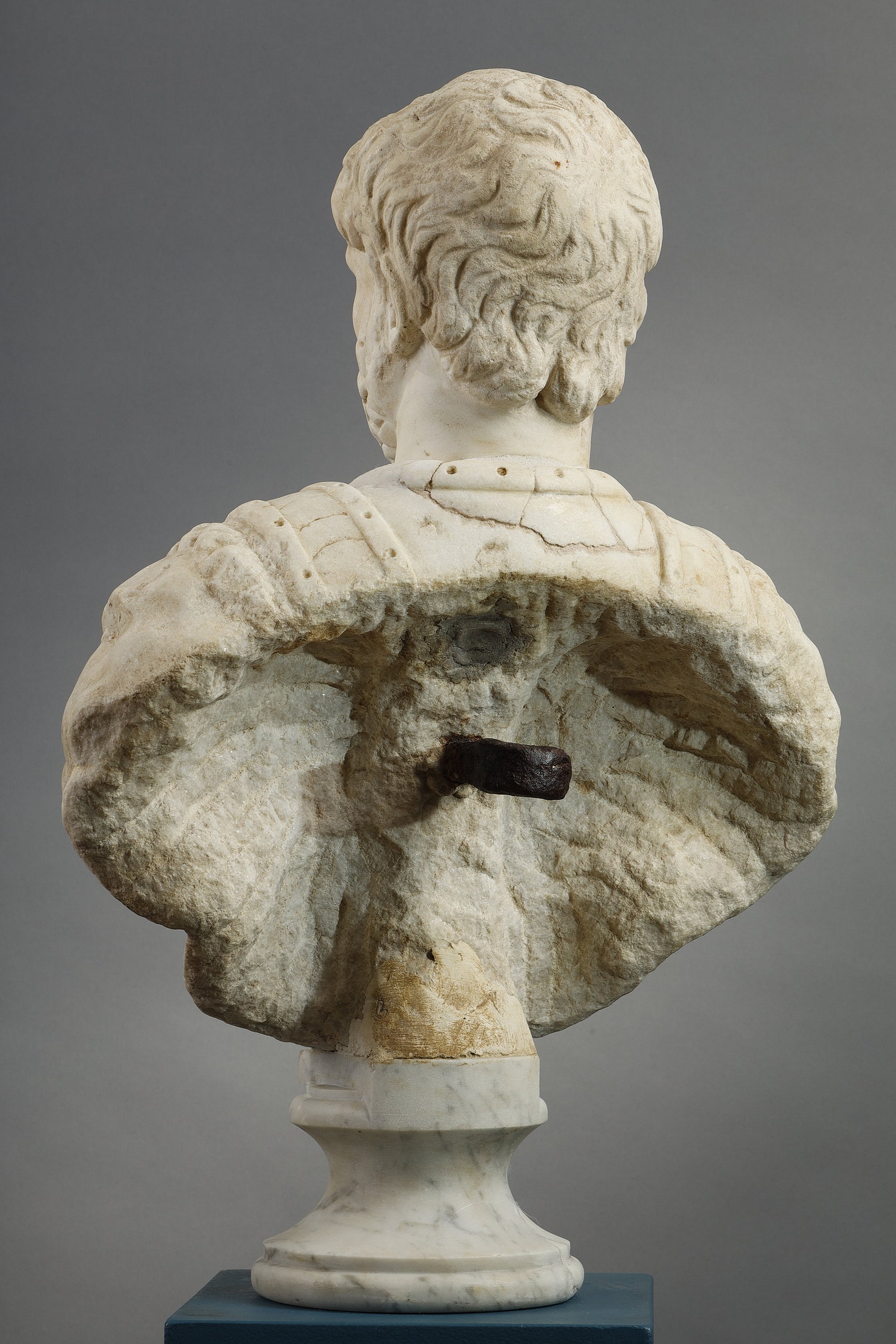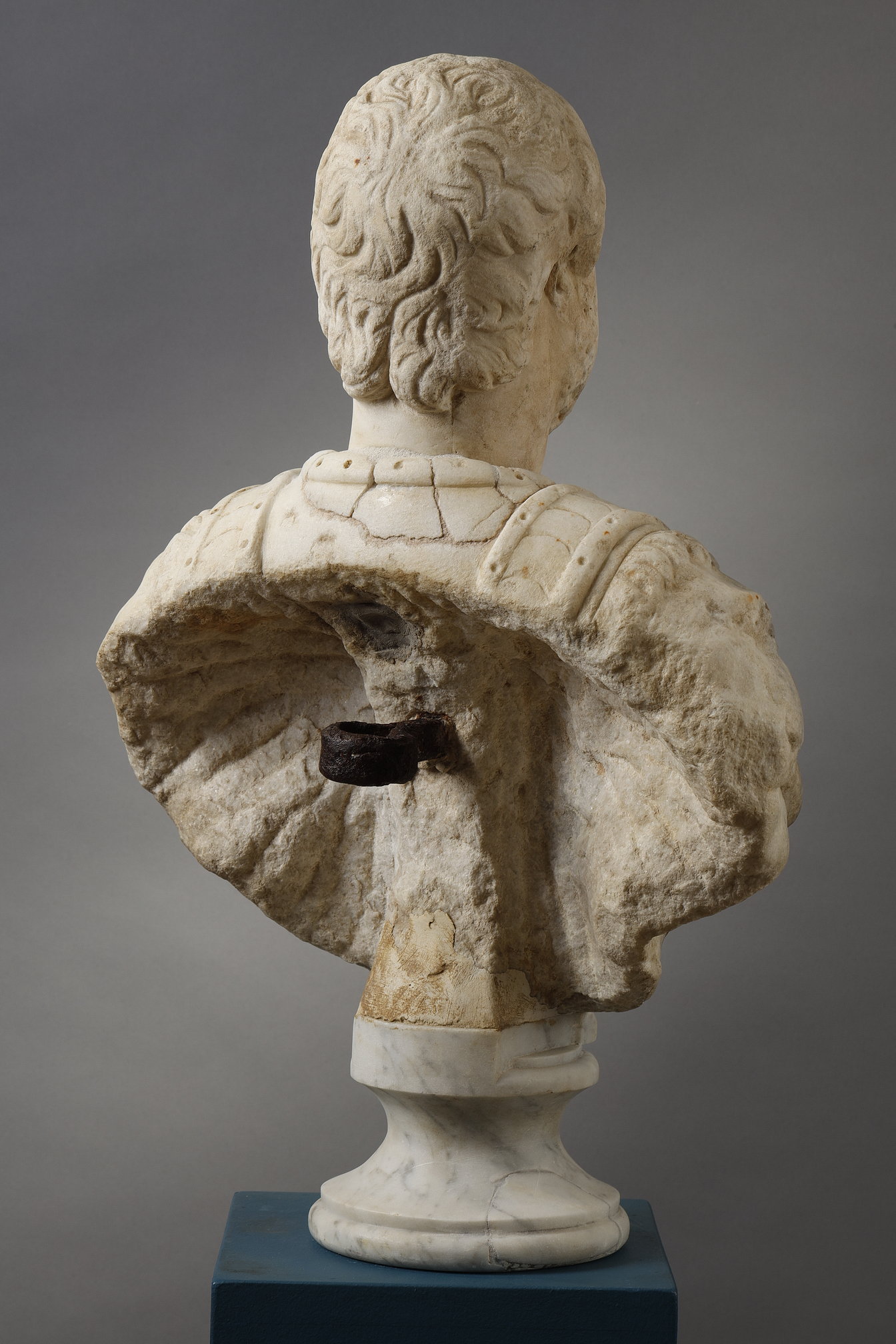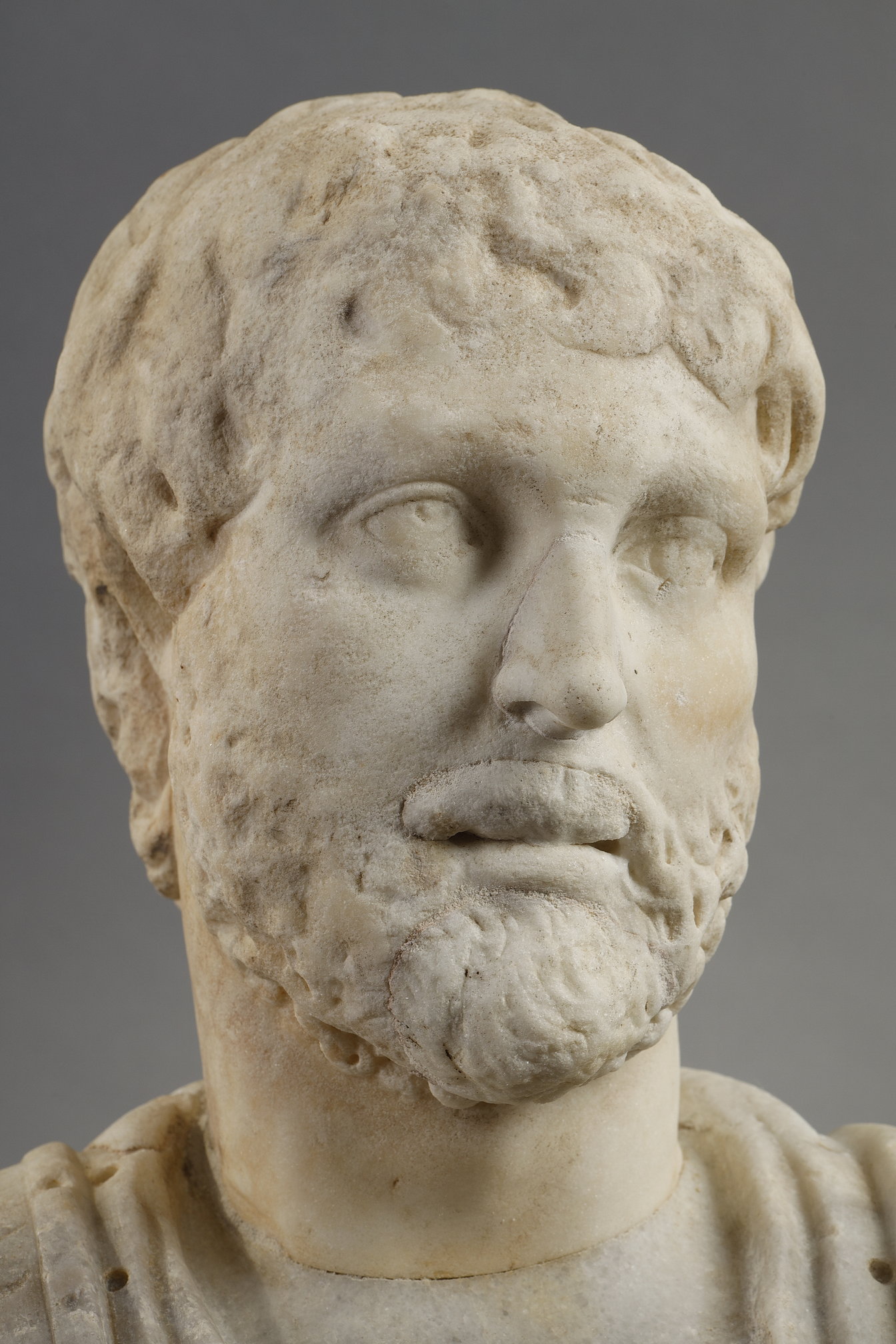Description
Presumed bust of Emperor Hadrian
Head from the 2nd century AD, bust with lions from the 16th-17th century
Dimensions: Total H with pedestal 53.5 cm x L 35 cm x D 15 cm
Marble bust probably representing Emperor Hadrian (reigned 117-138 AD)
In representations of Hadrian, he is mainly depicted as a meditative and wise warrior. His hair is always very curly and he has a beard.
Although a great warrior alongside his predecessor, Trajan (reigned from 98 to 117 AD), Hadrian advocated maintaining a return to peace. He made several trips not to continue territorial expansion but in order to develop the same economic and intellectual idea and bring the people closer to that of Rome; thus he consolidated its borders.
Mainly in a more humane administrative reform, he still happened to lead military expeditions as in Judea against the revolt of Bar-Kokhba (132-135).
Through his political acts of helping peasants and slaves and through his vast constructions in Rome, he is recognized as a peaceful and generous emperor, however, he is also portrayed as contradictory, with limitless ambition which sometimes pushes him to cruelty , thus qualifying him over time as a “benevolent dictator”.
This sculpture therefore shows a powerful representative, wearing the breastplate (a symbol of power which reassures the subjects). This 16th-17th century bust carries lions on its shoulders, further emphasizing the importance and strength of this character. Here, Hadrian reigns as war chief, an essential function for Emperors who are often represented as such.
The head, on the other hand, is older, from the 2nd century after Jesus Christ, and presents a gentle and meditative face.
We can stipulate that it is Emperor Hadrian (76-138 AD), by the representation of the beard. Indeed, the beard had been abandoned by the Romans for around 500 years, but Hadrian wanted to break with the adopted tradition in order to demonstrate his interest in Greek culture.
The eyes are even more a good indicator of this period. They are no longer just painted, but also sculpted; the iris is represented in relief, which brings these portraits closer to Greek culture and art.
His hair is a characteristic specific to Hadrian. He is depicted with wavy hair forming a crown on his forehead.
Although the wear of our marble somewhat diminishes the mark of the hair, we clearly see the delimitation of the hair positioned in the manner of a crown.
Several representations of Hadrian are known today, around 150 sculptures.
No two portraits are truly similar to any other; he is sometimes represented young and energetic, sometimes wise and warlike, as is the case here.
But the “hair index” as specialists like to call it and the beard on a 2nd century Roman head leave little doubt about the attribution of this portrait.
The head was mounted on the bust in the 16th-17th century, a practice that was often carried out during this period, when they were rediscovering ancient heads.
We can see an iron hook at the back attesting to the location of the bust in a niche. The pedestal is attached posteriorly.
Restoration of use and maintenance,
Mustache brought back from an old restoration.
We thank Mr. Caillou (Archaeologist – Doctor in history and ancient civilizations – Expert at the Court of Appeal of Orléans and auctioneers – Associate researcher at the French Institute of the Near East) for his contribution and his certificate which attests to the dating and attribution of this sculpture.
EXAMPLES OF WORKS
IN THE MUSEUMS:
Several sculptures are today exhibited in major museums such as the portrait of Hadrian found in the north of Israel and exhibited at the Israel Museum,
or the two marble sculptures from the Louvre Museum, one of which is of the Emperor in armor
Or that of the Baths museum in Rome,
And many other Museums.
